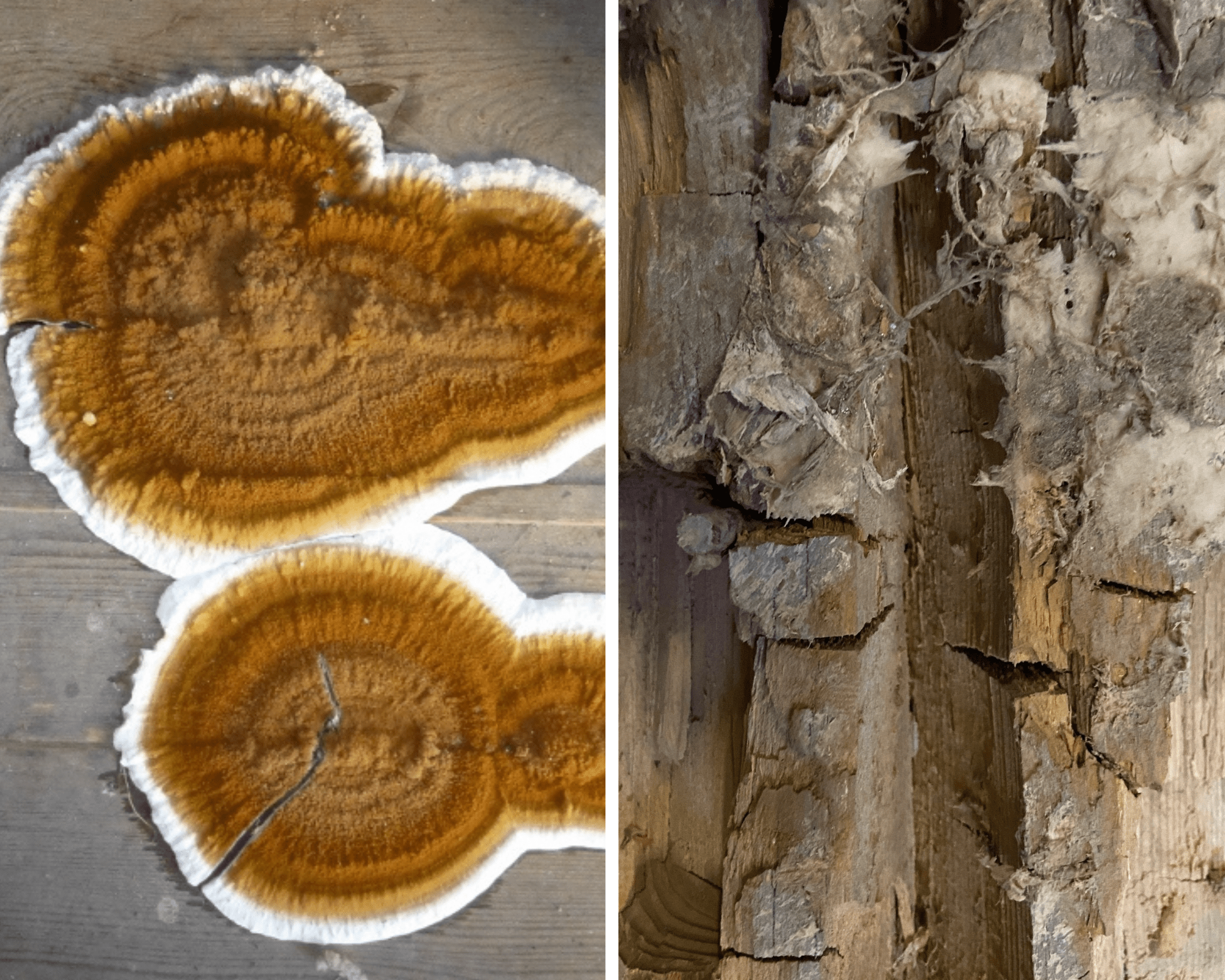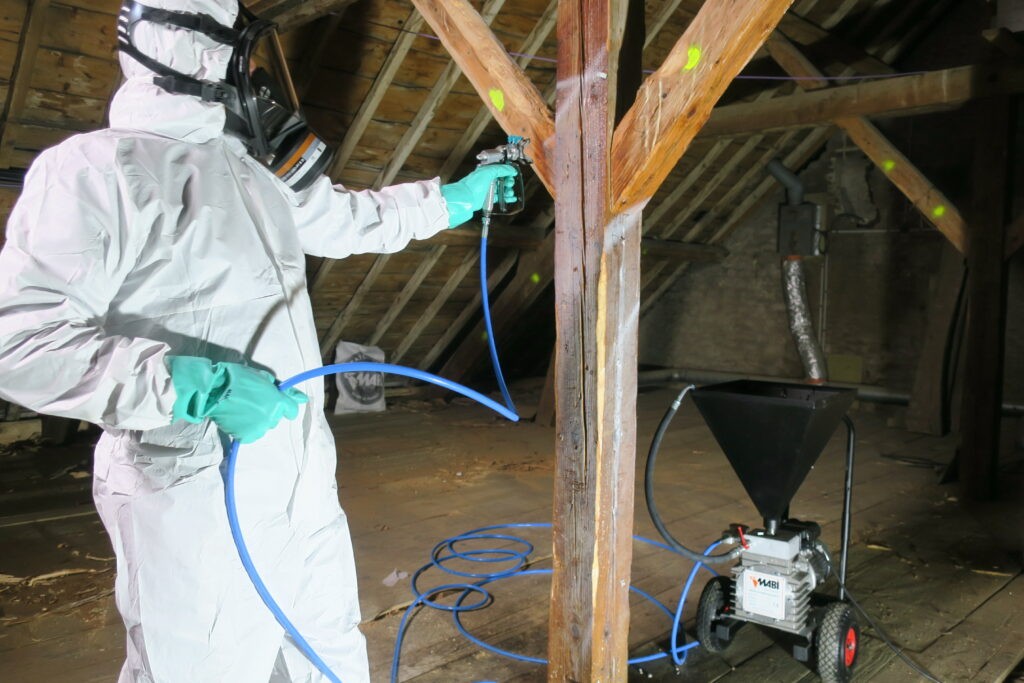The merula, or serpula lacrymans, is a wood-rotting fungus, which means that it degrades and attacks the cells of wood.
The merula evolves mainly inside the wood, which is why it is difficult to detect. It also spreads through the masonry and other materials.
Under what conditions does merula wood-destroying fungi appear?
The fungus appears when there is a humidity level of at least 22% and proliferates when the humidity level reaches 35%-40% and with a temperature between 18°C and 25°C.
This fungus also grows in darkness, in a confined atmosphere and in poorly ventilated areas.
- In the dark, the fungus looks like thick, white absorbent cotton or absorbent cotton: gray filaments develop and can reach several meters in length.
- In the light, the merula appears as a soft, orange/brown colored fungus.
The merula has a very strong odor that resembles that of an undergrowth or a forest in autumn.
If conditions are no longer suitable, the fungus does not die but enters a dormant period. As soon as the humidity and temperature conditions are favorable again, the fungus “awakes”.
The merula causes considerable damage, up to the collapse of all the contaminated pieces of wood (frame, floor, …)!
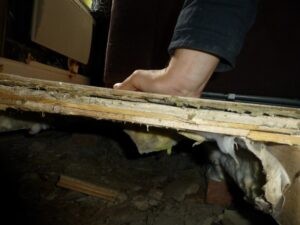
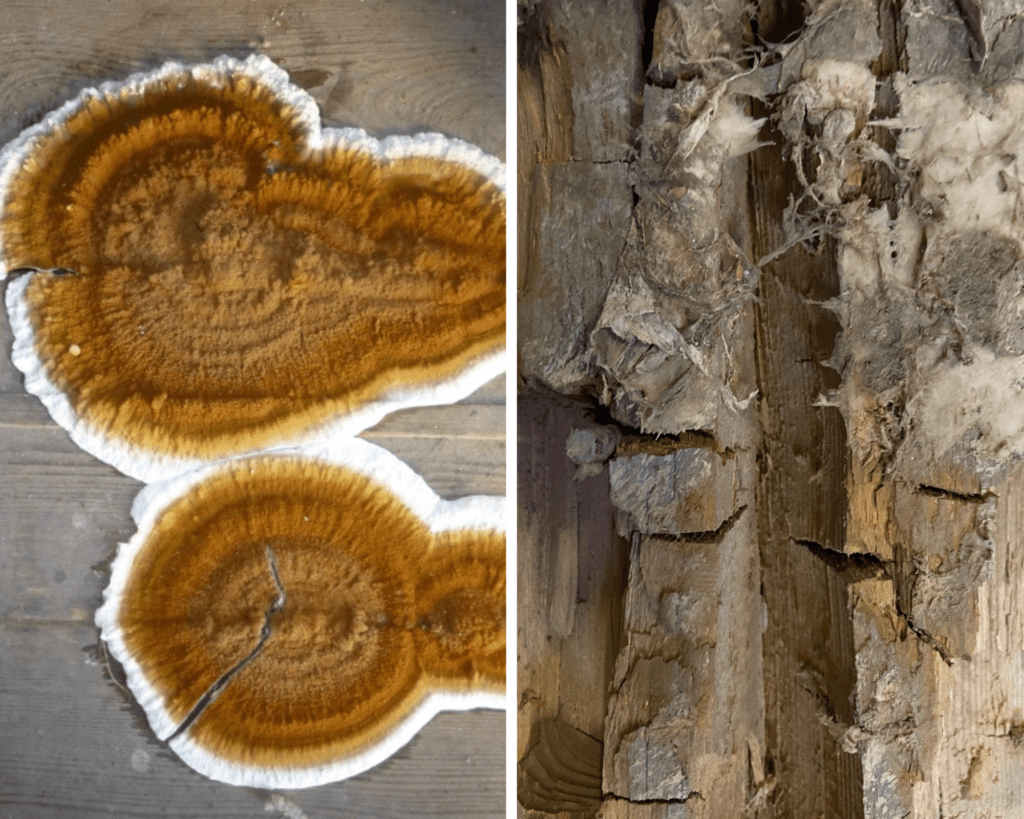
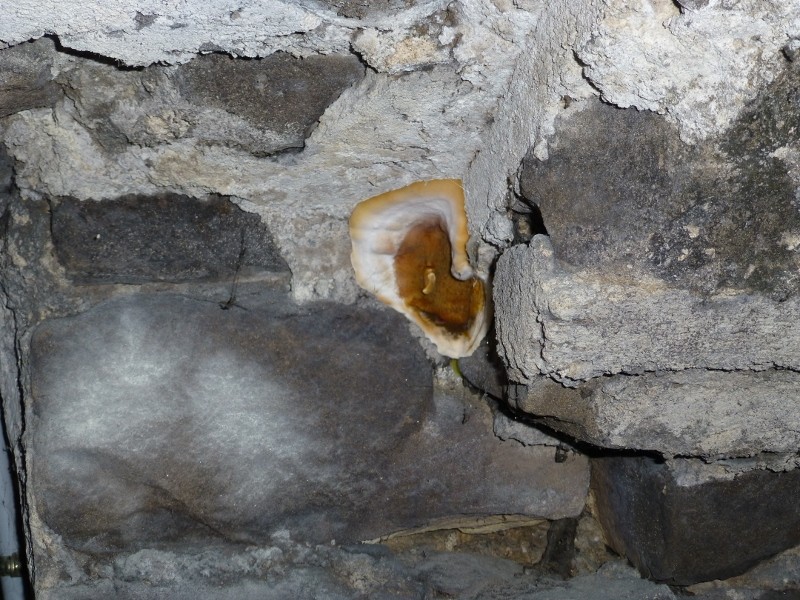
Weeping merula: solutions and treatment
If there is any doubt about the presence of merula, you should contact professionals who will carry out a diagnosis and treatment. Depending on the area to be treated (wood or masonry), the treatment methods differ.
For you, pest control professionals, equip yourself with the best equipment and material for your interventions.
It is important to protect yourself by equipping yourself with
- A respiratory protection device (mask, half mask, ventilation system, panoramic mask, …
- A suit
- Protective glasses
- Gloves
For your interventions, MABI proposes a range of material for the treatment of the wood-destroying fungi:

